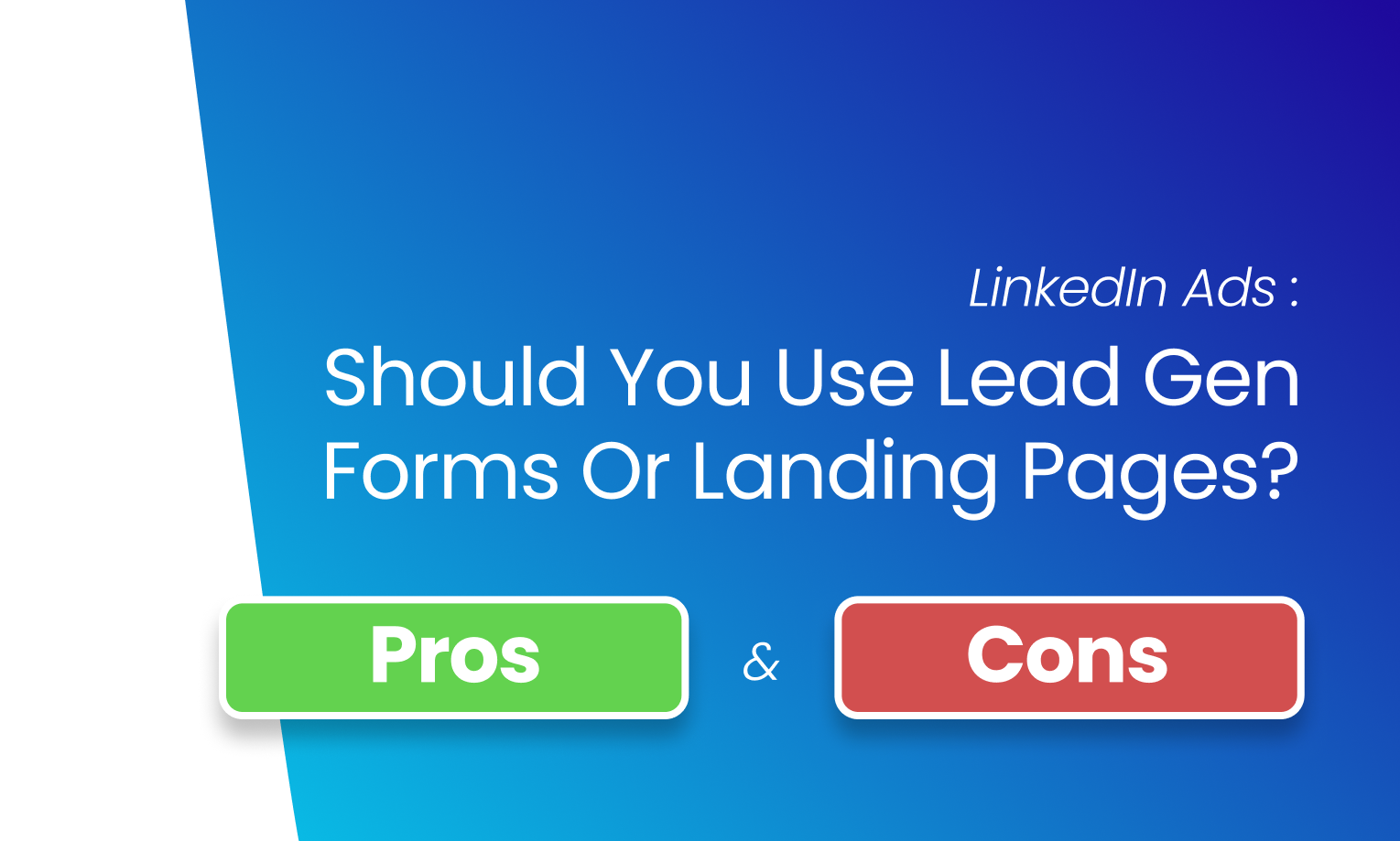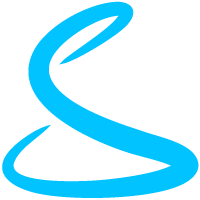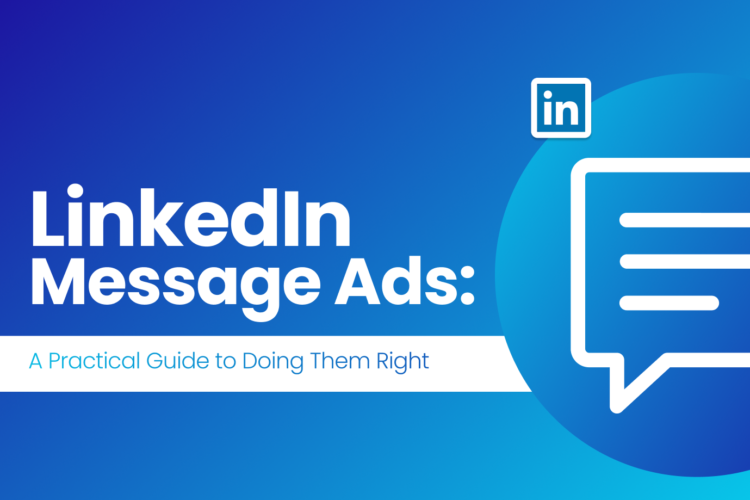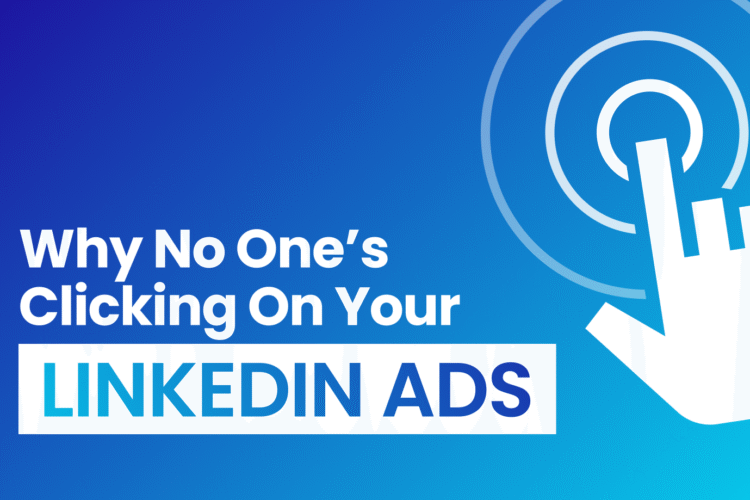
When it comes to LinkedIn ads, one question keeps coming up:
How do you want your audience to engage with your ad?
Should you use LinkedIn’s Lead Gen Forms or an external landing page?
Both have their place in a LinkedIn Ads strategy, but if your goal is to capture quality leads efficiently, Lead Gen Forms have a clear edge.
Let’s explore why.
Why LinkedIn Lead Gen Forms Convert Better
According to SoPro’s data, LinkedIn’s average conversion rate for Lead Gen Forms is 13%, compared to the industry-wide average of just 2.35% for landing pages.
That’s nearly 5.5x higher conversion efficiency, and here’s why it happens.
How the Auto-Fill Lead-Gen Form Process Works
When a LinkedIn user clicks on a CTA (like “Download”, “Get the Guide”, or “Book a Demo”), a Lead Gen Form instantly pops up within LinkedIn itself.
It’s pre-populated with information from the user’s LinkedIn profile, eliminating friction and making submission effortless.

What Gets Auto-Filled In a Lead-Gen Form:
- Contact Information: First name, last name, email address
- Work Information: Job title, company name, company size
- Education: Degree, field of study
- Location: Country, city, state, zip code
- Demographics: Gender (optional, not pre-filled)
How the Lead-Gen Forms Help B2B LinkedIn Marketers:
- Higher Conversion Rates: The one-click submission drives faster, more frequent completions
- More Accurate Data: You get verified professional info directly from LinkedIn
- Improved User Experience: No redirects, no slow-loading websites, no distractions
In other words, Lead Gen Forms streamline the buyer journey by keeping your prospects where they already are.
Which LinkedIn Ad Formats Enable Lead Gen Forms?
You can attach Lead Gen Forms to several LinkedIn ad formats, giving you flexibility to match your creative with the right experience.
- Single Image Ads: Perfect for promoting guides, checklists, or eBooks. A clean image with a strong CTA works best.
- Carousel Ads: Tell a short story or highlight multiple value points before asking for the lead.
- Video Ads: Use short, engaging videos to demonstrate expertise and then invite viewers to sign up or download.
- Document Ads: Showcase insights directly in LinkedIn’s feed and prompt users to unlock the full version via the Lead Gen Form.
- Message Ads: Deliver personalized messages directly to inboxes with embedded Lead Gen Forms. Ideal for event invites or consultations.
Each format keeps the user inside LinkedIn, ensuring minimal friction from impression to conversion.
Pros of Lead-Gen Forms: Where They Win

Imagine you’re a busy decision-maker scrolling through LinkedIn between meetings.
You see an ad that promises a free resource directly related to your pain point.
Would you rather:
- Click a link, wait for a website to load, manually type your details, and confirm via email?
Or - Tap “Download,” have your info pre-filled, and access the content instantly?
That’s the magic of LinkedIn Lead Gen Forms.
They meet users where they are, turning passive scrollers into qualified leads in seconds.
And for small B2B businesses that run on tight ad budgets, this matters even more.
With limited spend, you can’t afford a 98% drop-off rate on your landing page. You need results now.
The Hidden Cons of Using LinkedIn Lead Gen Forms
LinkedIn’s Lead Gen Forms often work like a magic potion for small B2B businesses. The pre-filled fields, one-click submissions, and sky-high completion rates- everything makes it easier.
However, for certain industries, such as B2B healthcare or high-ticket services, using them blindly can sometimes do more harm than good.
Here’s why 👇
1. Sometimes you get “easy” leads, not “qualified” leads
Lead Gen Forms remove friction, but that friction is often good in B2B.
When someone fills a long-form landing page, they’re genuinely interested.
When they tap a one-click form inside LinkedIn, they might just be curious.
🔹 Result: You end up paying for low-intent contacts who rarely reply or book calls.
2. You lose control over the nurturing experience
With Lead Gen Forms, users never visit your website; they submit info inside LinkedIn.
That means:
- They don’t experience your landing page messaging, proof, or brand personality.
- You lose the opportunity to retarget them based on their website behavior (such as scrolling, time on page, etc.).
🔹 Result: Your funnel weakens. You collect data but build no connection.
3. CRM sync ≠ relationship
Yes, you can auto-sync leads to HubSpot or Zoho, or any other CRM.
But a name in your CRM isn’t the same as a warm prospect.
Unless you follow up within hours and continue nurturing with personalized touchpoints (email, remarketing, content), most of these leads go cold fast.
🔹 Result: A bloated CRM with low conversion rates.
4. Optimization becomes harder
Lead Gen Forms hide the micro-behaviors that help you learn and optimize.
You can’t see how users interact with your page, what sections they drop off on, or which CTAs work best.
🔹 Result: You can’t improve your funnel over time because you’re missing key behavioral data.
5. Limited storytelling for complex offers
If your offer needs context like a healthcare platform demo, a case study download, or a diagnostic quiz, a small LinkedIn form simply can’t explain the value.
You need a dedicated landing page with copy, visuals, and credibility markers to warm up your audience.
🔹 Result: Fewer high-quality conversations, even if the cost per lead looks great on paper.
✅ When Lead Gen Forms do make sense
They’re not bad, just misunderstood.
They work best when you:
- Offer a simple, low-friction lead magnet (e.g., “Get our free compliance checklist”).
- Already have a retargeting layer built for nurturing.
- Treat the form as a top-of-funnel capture, not a sales-ready lead.
TL;DR:
LinkedIn Lead Gen Forms boost quantity, but not quality.
For B2B healthcare or enterprise services, it’s better to drive traffic to a tailored landing page- where prospects see your value, not just your form.
How Shivyaanchi’s LinkedIn Lead Gen Form Framework Works
Here’s the proven customer-journey framework we use for our most successful LinkedIn Ads campaigns:
- The ICP sees the ad: A high-quality, single-image ad that immediately speaks to their pain point
- The offer: A free, valuable content offer (like a short PDF or checklist)
- The action: They click “Download”
- The experience: The Lead Gen Form pops up, auto-fills, and is submitted in seconds
- The follow-up: We get notified, nurture the lead through follow-ups, and hand over warm prospects to the client’s sales team
This simple, frictionless journey has helped over 102 B2B clients consistently generate qualified leads through LinkedIn Ads.
Check out one of our client success stories:
👉 How TheOther4 Landed Big Brands Like Nestlé & P&G via a Multi-Channel Growth Marketing Engine
For more inspiration, explore our LinkedIn Ads Case Studies that show how we drive measurable growth for B2B brands.
So, Do Landing Pages Never Work?
Of course, landing pages still have their place, especially when your ad objective goes beyond lead generation.
If your goal is:
- Brand Awareness
- Website Traffic
- Top-of-Funnel Engagement
- And you have complex offers that need better explanations
And as discussed above, certain industries, such as B2B healthcare or, in the case of high-ticket, complex offerings, landing pages can work better.
Because in such cases, redirecting users to a landing page makes more sense.
It helps your audience explore your brand story, services, and other assets that reinforce trust and visibility.
In short:
- Use Lead Gen Forms for fast, high-converting lead generation
- Use Landing Pages for awareness, nurturing, or multi-step education-based campaigns
For a detailed understanding of when to choose which approach, read our guide on Building a Full-Funnel LinkedIn Ads Strategy for B2B.
Conclusion
For most B2B advertisers on LinkedIn, Lead Gen Forms outperform landing pages in both convenience and conversion rate.
The data speaks for itself: 13% vs 2.35%.
But more importantly, the experience matches modern buyer behavior with minimal friction, instant gratification, and contextual relevance.
If you’re running LinkedIn Ads for lead generation, Lead Gen Forms aren’t just an option; they’re your advantage.
FAQs
- Are LinkedIn Lead Gen Forms better than landing pages for B2B?
Yes. They typically convert at a much higher rate (13% vs 2.35%) and reduce friction in the lead capture process. - Can I use LinkedIn Lead Gen Forms with video or carousel ads?
Absolutely. LinkedIn supports Lead Gen Forms across multiple ad formats, including video, carousel, and document ads. - What are the disadvantages of LinkedIn Lead Gen Forms?
You have less control over branding and post-conversion experience since the user doesn’t land on your site immediately. - When should I use landing pages in LinkedIn Ads?
Use them for top-of-funnel campaigns like brand awareness or website traffic, where you want visitors to explore your site. - Do LinkedIn Lead Gen Forms integrate with CRMs?
Yes. They integrate seamlessly with tools like HubSpot, Salesforce, and Zapier for instant lead syncing.


